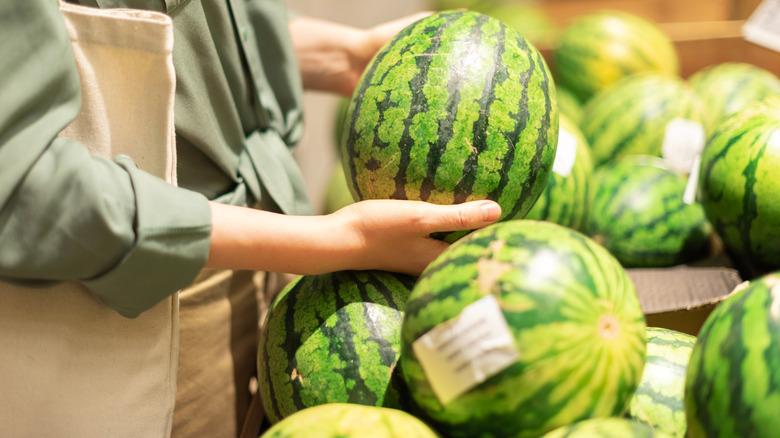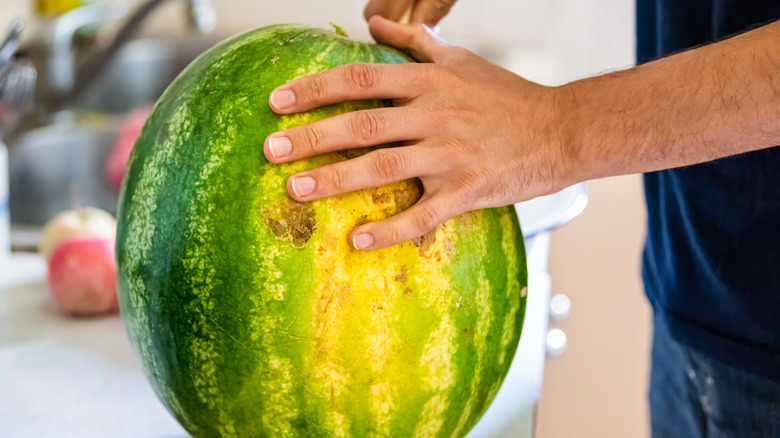Follow The 2-Finger Trick To Pick Out The Best Watermelon Every Time
Choosing perfectly ripe fruit at the supermarket can feel like one of life's greatest mysteries, especially when it comes to watermelons. You can't exactly slice them open in the store to check the fruit quality, and it's an awful feeling to come home with what you believe to be the best melon in the bunch, only to find mealy, flavorless pink mush inside. But those days are over — because there's actually an easy visual trick to choosing a good watermelon right in your hands.
All you need to find a ripe watermelon is to measure the markings on the rind with two fingers. You're looking for nice, even green stripes — a prerequisite for any eligible melon candidate (if it doesn't have stripes, it was picked too soon and is probably a dud). Each green stripe should be about the width of your pointer (aka index) and middle fingers together. Picking a melon with these two-finger-width stripes will guarantee that you have one good enough to eat on its own with a little salt or dressed up in a grilled watermelon salad — especially if you spot any other signs of a perfectly ripe watermelon.
Double-check ripeness with other methods
If trusting the width of your watermelon's stripes seems too easy, there are a few other clues to look for that will tell you how ripe it is. Secondary to the finger test, you should check the weight as well as the melon's ground spot. It's a good sign to pick up a melon that feels just a bit heavier than you would expect by just looking at it; that means it has a high water content and is therefore going to be juicy.
Perhaps equally as important as the two-finger check is the ground spot. It might seem counterintuitive to choose a melon with a discolored patch on it — especially since when choosing other fruits, the fewer blemishes, the better — but for watermelons, it's a plus. This faded area on the bottom of the watermelon ranges from pale cream to deep butter yellow and even light orange. The discoloration isn't a defect; it's simply an indication of how long the melon ripened on the vine. Ideally, you'll want to choose a melon with a rich yellow spot, because that's one that was left to grow for an appropriate amount of time before harvesting. Since watermelons are one of the few fruits that don't ripen once picked, that extra time on the vine is crucial for sweet, delicious fruit.

